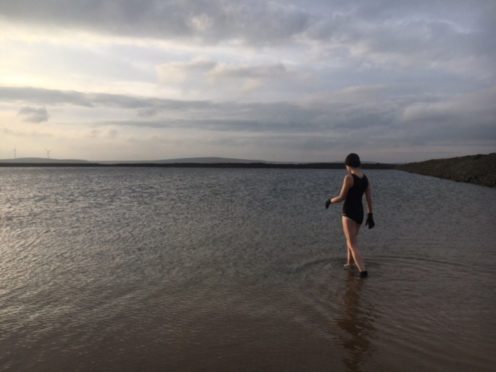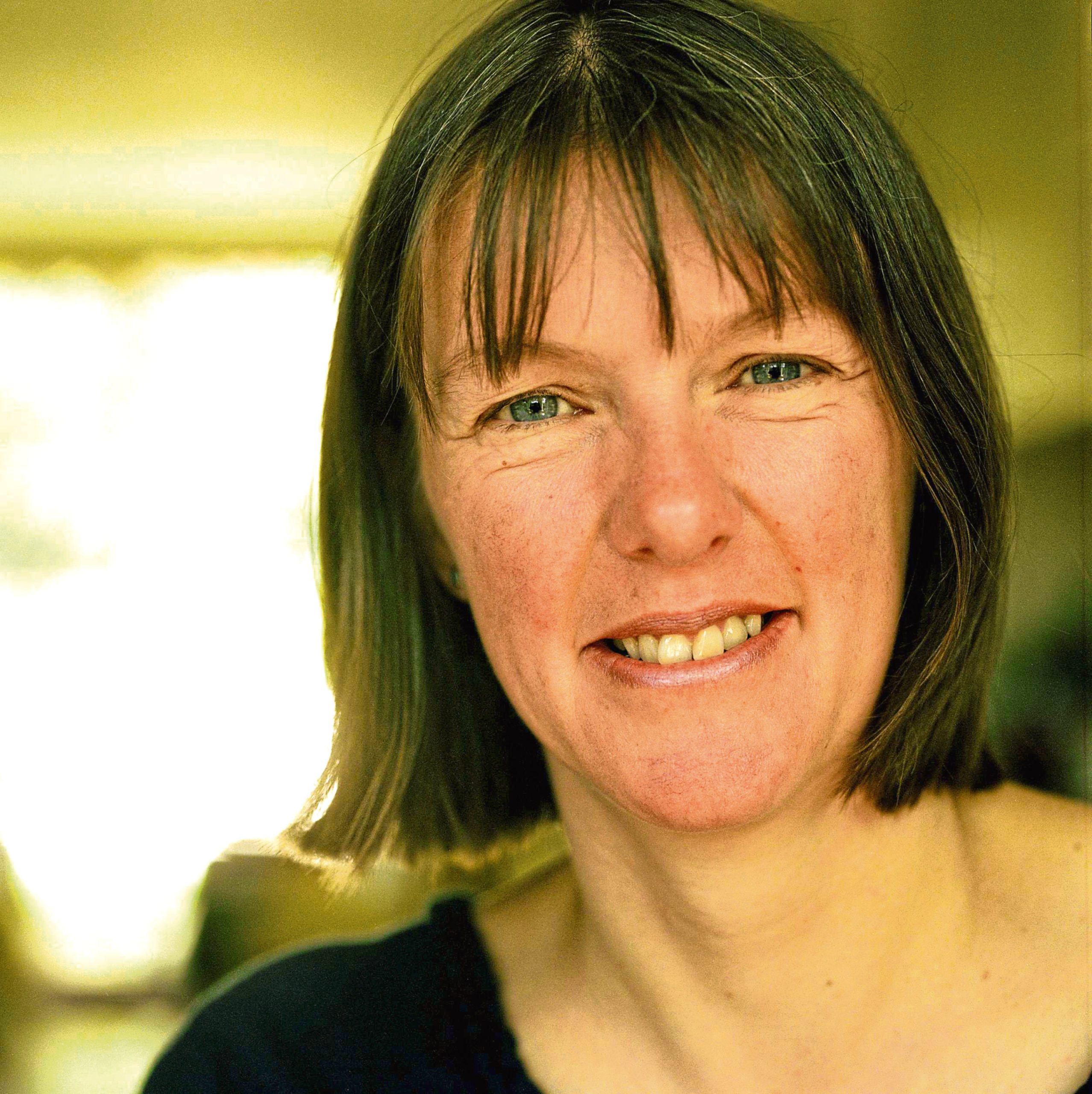
As locked-down Scots stayed in, cars were parked and planes were grounded, our country’s emboldened wildlife came a little closer.
Foxes were spotted in Edinburgh’s Waverley Station and deer spotted on Glasgow’s Buchanan Street, while dolphins played in normally bustling harbours.
And, as the world stopped, we began to notice nature again, the birdsong usually drowned out by our racket and the unexpected visitors to our neighbourhoods.
It was not before time, according to Kathleen Jamie. The award-winning poet and nature writer, and editor of a new collection of contemporary Scottish writing on nature and landscape called Antlers Of Water, said: “We have lost this ability to look and listen hard to our immediate environment and that was a thing that came back in lockdown. The silence enabled us to hear it again.”
This looking at and listening to what she terms as “the more-than-human world” and consideration of our relationship with it, is the basis for the new anthology of poetry and prose described as “celebratory, political, frightened and hopeful”.
With 20 contributors, the writing ranges from wild swimming with prize-winning Orcadian author Amy Liptrot, to a house-invading blackbird with Lockerbie-based Saltire award-winner Em Strang.
We caught up with the anthology’s editor at the home she shares in Newburgh, Fife, with her woodworker husband.
She explained the book’s intention to celebrate our everyday encounters with nature: “The Scotland reflected to us when it comes to nature writing is not the Scotland we all live in. Very few of us can actually go and hang out in the Cairngorm plateau for any length of time. I was interested in what I would get if I asked them (the contributors) to just write about something to do with the natural world.
“When the pieces started coming in I was delighted, because we have people in tenements looking at pigeons on the window ledge, and we’ve got Jaqueline Bain in Paisley who is interested in the wasps’ bike in her garden.
“That’s what I was after, the kind of Scotland we do inhabit rather than the kind of Scotland sometimes TV programmes tell us we inhabit, which none of us recognise.”
Nature writing – a term she admits she’s not keen on “probably because it’s still associated with trolling through the undergrowth looking at little birdies” – has been around almost since humankind could hold a quill. But she explains it went into abeyance for a few years before making a comeback just over a decade ago, this time with “a new awareness of degradation, climate change, and environmental crisis.”
She explained: “You cannot now write about nature without being aware of the massive problems that are going down. There can’t be anybody – however much they deny it – unaware that we are in crisis and we are destroying the natural world and we are being destroyed ourselves because of that.
“Every other species we are supposed to be sharing this planet with is not given a look in. We are putting an end to species we have been sharing the planet with since the dawn of time.
“We have come through this massive evolutionary journey with them as companions without really noticing they are there, except for the ones we have annihilated along the way. We have a chance through our writing and through our art to look to these other creatures, acknowledge them and ask what they are entitled to?
“Are they entitled to a life on the planet? It’s going to be very hard to say “no”. We can also find joy, redemption and pleasure in the natural world but we would be kidding ourselves if we thought everything was fine.”
The writer, whose interests include archaeology, whales and birds, has witnessed first-hand the devastating impact of climate change, as revealed in Surfacing, a collection of her essays.
In 2015 she spent time at an Alaskan Yup’ik village as a decade-long archaeological project initiated in Aberdeen sought to save ancient artefacts washed up as the tundra’s permafrost melted.
She said: “Over a handful of years you can see a difference in the sea levels. They are preparing to move the village because the sea is encroaching so fast. And because the land is falling into the sea and eroding so fast, people began to discover old objects. They realised the sea had revealed an old village.”
Climate change has left its mark closer to home, on the island of Westray off Orkney. She said: “They are getting winds there now that they haven’t seen in living memory, and sand dunes that had accumulated over thousands of years have blown away.
“Underneath archaeologists discovered Bronze Age and Neolithic villages and field systems. It is climate change that has revealed these places and links those two sites.
“As time goes on, we will see less and less of the coastline… many sites on Orkney are falling into the sea as it rises.”
She fears for coastal cities and the impact on people. “It is happening in other parts of the world but it hasn’t quite hit us here in Western Europe,” she said. “More and more people are becoming aware that things are seriously out of kilter. We’d rather not think about it but it is going to be unavoidable. It is frightening. If we don’t get the awful encroachment of the sea we will have refugees who are.”
And she is worried that the lessons of lockdown will be easily forgotten. “We are very quickly going to get ‘normal’ thrust back at us. Privately many people are saying, ‘no this is enough, this is the time to stop, think and change our future’ but I fear we won’t get the opportunity.
“Maybe speaking about climate change is part of the turning around…maybe we will think about our own lives and responsibilities and make adjustments. But as I’m changing low energy lightbulbs I can see the flare from the Mossmorran gas plant here. Still, I like to hope we are thinking about change and this Covid has shunted us on a little bit.”
And she hopes Antlers Of Water – whose title is taken from Norman MacCaig’s Looking Down on Glen Canisp – will help readers to take responsibility and pleasure. She smiled: “There is a pleasure and love to the world behind this.”
Antlers Of Water is published by Canongate; Surfacing is released by Sort of Books.
From Swimming Away From My Baby
Amy Liptrot
…Ten weeks after giving birth, snow was on the ground but, spurred on by a brave friend, I was back in the water again. We swam for seconds rather than minutes but I was jubilant. I was back and it felt like a real milestone. In the water it was wonderful to move my body freely. I appreciated it more than ever.
In the early months of motherhood, time to swim had to be carefully planned and executed. I’d set my alarm for sunrise so I could be home again in a couple of hours, just as the baby needed another feed. On the way home, my pulse would quicken.
When I got home I’d feel like I’d pulled off a magic trick, like I’d dreamed my swim. The salt in my hair was proof that the world still existed outside my baby bubble of blankets and milk.
On the spring equinox I fed the baby at 5.15am then left him in bed with his dad. I put on my warmest layers and drove out of town. I parked and after a short climb was up at the hilltop reservoir just as the sun rose.
A kestrel hovered. There were patches of snow. Unusually, there was barely any wind at the top and the water was glassy, reflecting the sunrise, icy around the shallowest edges.
I took some photographs, then stripped and waded in. It was perhaps the coldest water I’d ever been in but I barely hesitated. I’ve given birth; I am indestructible.
I only swam for 20 or so strokes, swearing, shocked into fear by the temperature. On the walk back down I saw ravens, wild geese and lapwings in courtship
dance. Despite the cold, it was almost spring.

Enjoy the convenience of having The Sunday Post delivered as a digital ePaper straight to your smartphone, tablet or computer.
Subscribe for only £5.49 a month and enjoy all the benefits of the printed paper as a digital replica.
Subscribe © Eamonn McCabe
© Eamonn McCabe